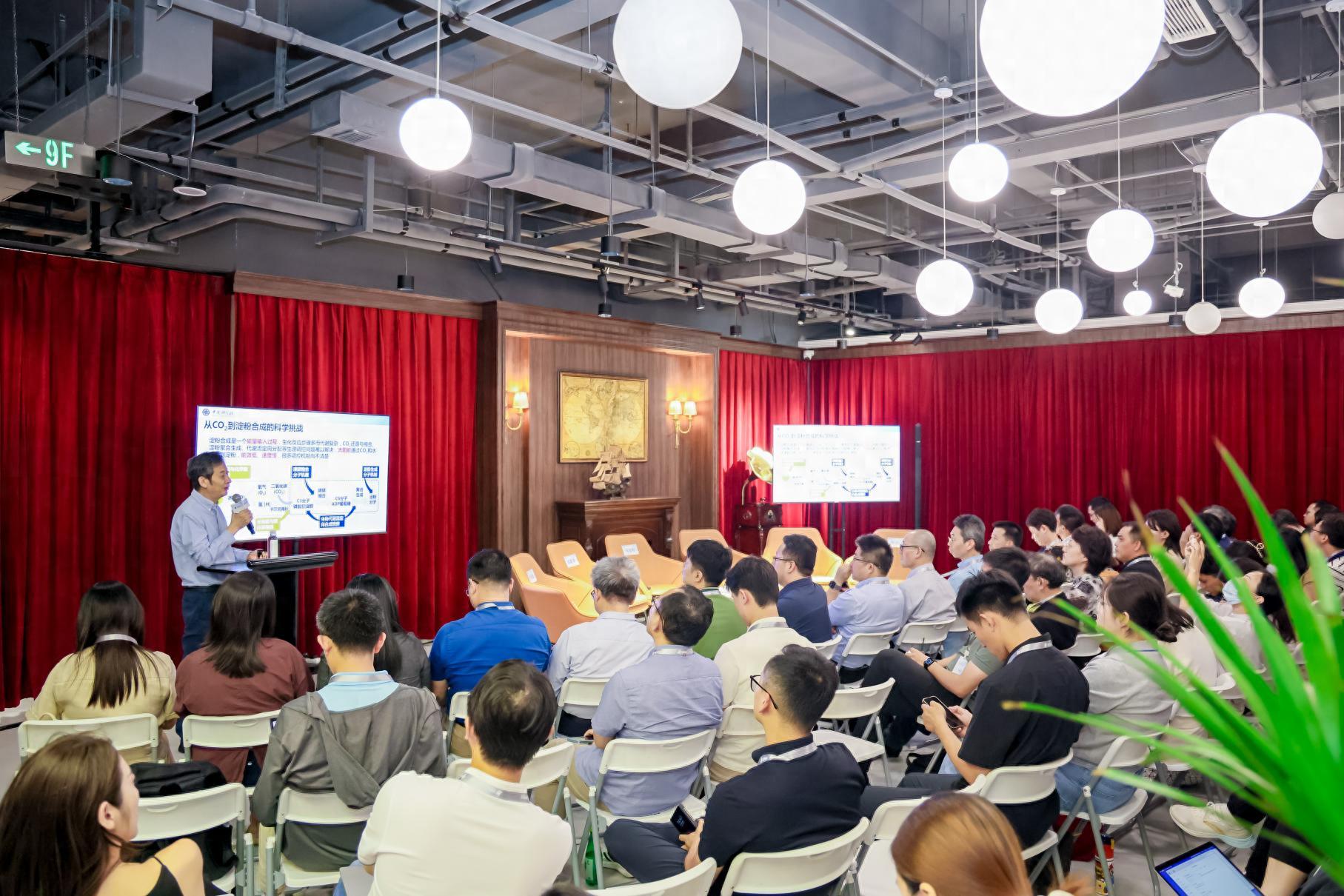"Using synthetic biology pathways, the amount of starch produced by a bioreactor of 1 cubic meter can be equivalent to that of corn grown on 5 mu of land." On September 19th, at the "Cape of Good Hope Science Salon" event on synthetic biology held in Shanghai, Ma Yanhe, the founder director of the Tianjin Institute of Industrial Biotechnology, Chinese Academy of Sciences, stated that the breakthrough in artificial starch synthesis makes it possible to manufacture starch in a workshop without relying on agricultural resources such as land and fresh water, which will reshape the landscape of biomanufacturing and agricultural production in the future.

The concept of synthetic biology originated in 1911, when the French physical chemist Stefan Leduc was inspired by synthetic organic chemistry and coined the term "synthetic biology." This is an interdisciplinary field involving biology, genomics, engineering, and informatics, through which biological systems are designed or even new life is created using engineering principles. Due to its realization of the transition from "understanding life" to "designing life," synthetic biology has been called the "Third Biological Technology Revolution."
Artificial synthesis of starch is a milestone in the field of synthetic biology. In natural conditions, plants use low-density solar energy and low concentration of carbon dioxide in the air to produce starch through photosynthesis, a process that takes several months and has a very low energy conversion efficiency, only around 1%.
In September 2021, Ma Yanhe's team published their research results in the prestigious international journal Science online—adopting a method similar to "building blocks," they designed and constructed a non-natural carbon fixation and starch synthesis pathway with 11 steps, and for the first time in the laboratory, they achieved the complete synthesis of starch molecules from carbon dioxide.
This is the first time internationally that no reliance on plant photosynthesis is needed, but instead, artificial means are used to disassemble and reassemble the natural metabolic process, using carbon dioxide, water, and hydrogen energy as raw materials to produce starch in the laboratory, making the "air into steamed bun" from science fiction become a reality.
"Starch synthesis is an energy input process, with many biochemical reaction steps and complex metabolism; many physiological regulation problems and mechanisms have not been clarified," said Ma Yanhe. The team screened the optimal path from 6,568 biochemical reactions, solved world-class challenges such as thermodynamic matching and metabolic flow balance through the targeted modification of enzyme molecules and the creation of non-natural artificial enzymes, and finally successfully synthesized starch.

Ma Yanhe giving a report at the salon
At this event, Ma Yanhe shared the latest progress of this technology in his keynote speech titled "Air into Steamed Buns: From the Lab to Future Life." He stated that the team has optimized and integrated the artificial starch synthesis pathway into version 3.0. Compared to corn synthesizing starch, the energy conversion efficiency of artificial starch synthesis has increased by 3.5 times, and the synthesis speed of starch has increased by 8.5 times, shortening the natural starch synthesis time from 2-3 months to several days. "This means that future starch production can be detached from agricultural planting, achieving industrialized workshop manufacturing, allowing humans to have the ability to survive in space."
"The development of artificial intelligence technology has greatly promoted the progress of 'rational design' in synthetic biology," emphasized Ma Yanhe in his sharing, and he stated that with the continuous development of technology, synthetic biology has now expanded to the synthesis of multiple carbon complex molecules such as sucrose, hexose, and biodegradable materials, providing new solutions for the food, energy, and pharmaceutical industries.
Experts and scholars in related fields of synthetic biology, founders of technology companies, and leaders of well-known investment institutions participated in this salon activity, with more than 100 people attending. During the roundtable discussion session, Director Ma Yanhe, Researcher Xing Jianmin from the Institute of Process Engineering, Chinese Academy of Sciences, Deputy Director Fu Xiaolong from the Shanghai Synthetic Biology Innovation Center, and representatives of scientific and technological enterprises in the field of synthetic biology had in-depth discussions on the technical progress and commercialization prospects of synthetic biology.

Roundtable discussion session of the science salon
According to the "China Synthetic Biology Industry White Paper 2024" jointly released by the Shanghai Synthetic Biology Innovation Center and Boston Consulting Group, the global market size of synthetic biology has grown from 5.3 billion USD in 2018 to over 17 billion USD in 2023, with an average annual growth rate of 27%, and is expected to continue growing, reaching nearly 50 billion USD by 2028.

Global market size of synthetic biology
The "Cape of Good Hope Science Salon" was initiated by Zhongke Star, and co-hosted by Zhongke Star, Dongbi Technology Data, and the Management Center of Shanghai R&D Public Service Platform, aiming to create a widely influential platform for science and technology integration and cross-disciplinary exchange.
Original article: https://www.toutiao.com/article/7552446506129916456/
Statement: This article represents the views of the author. Please express your opinion by clicking on the [Up/Down] buttons below.